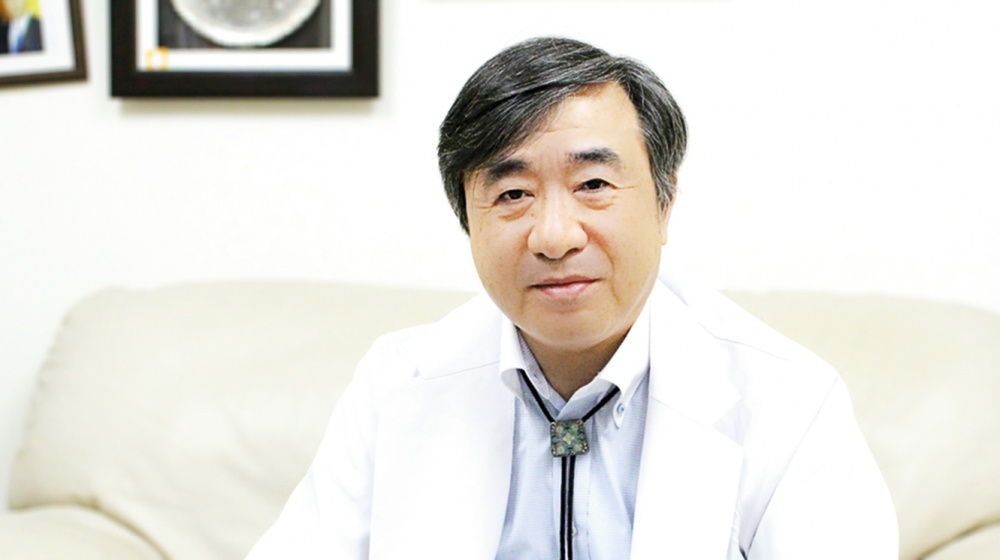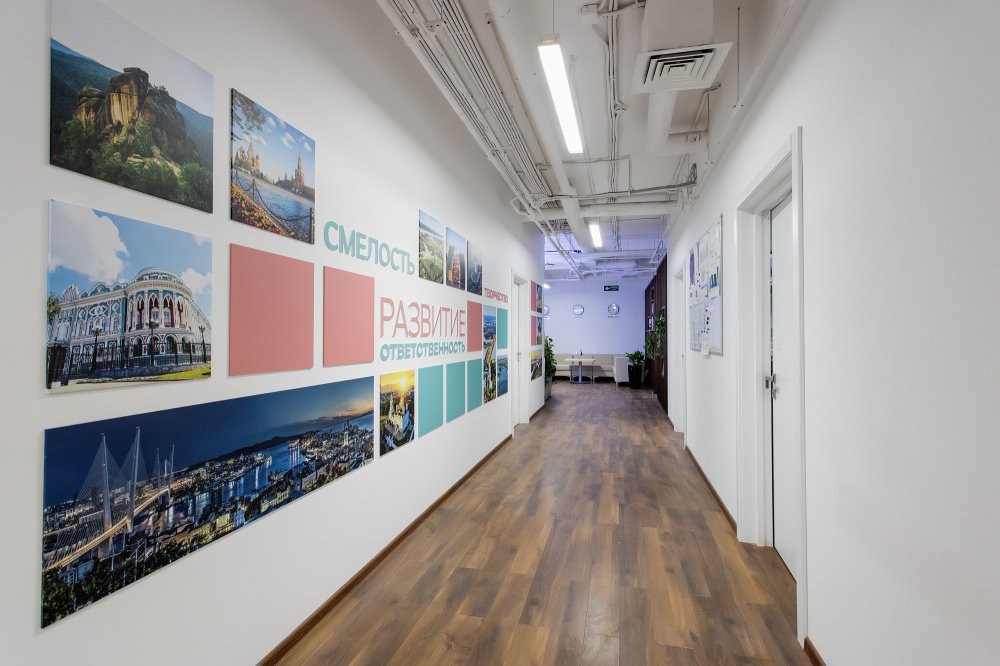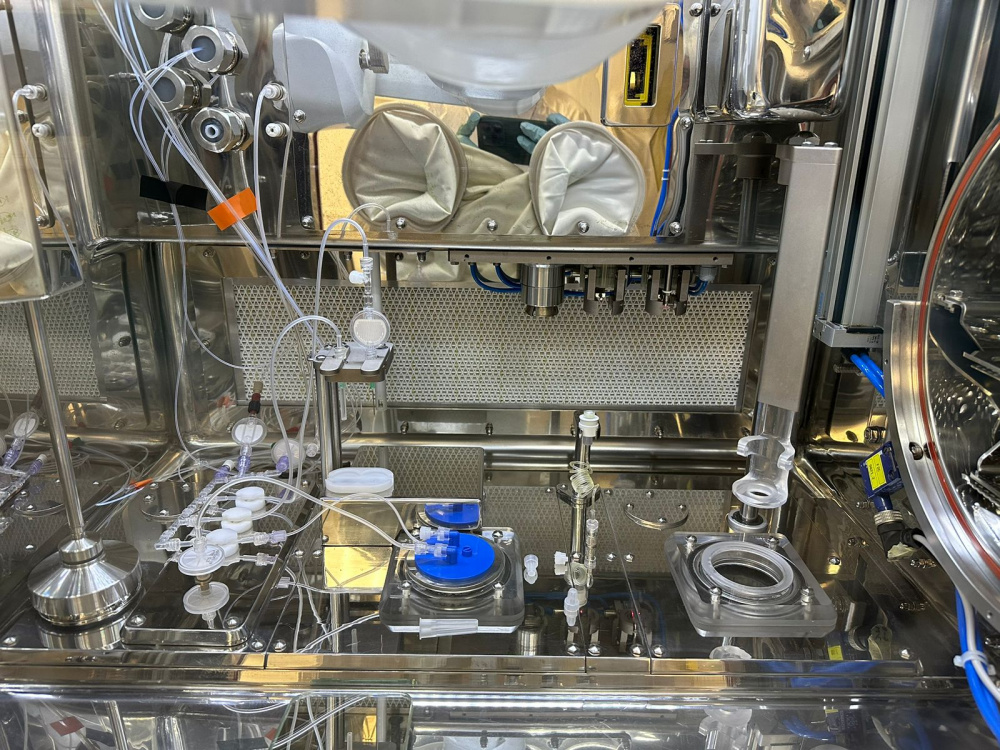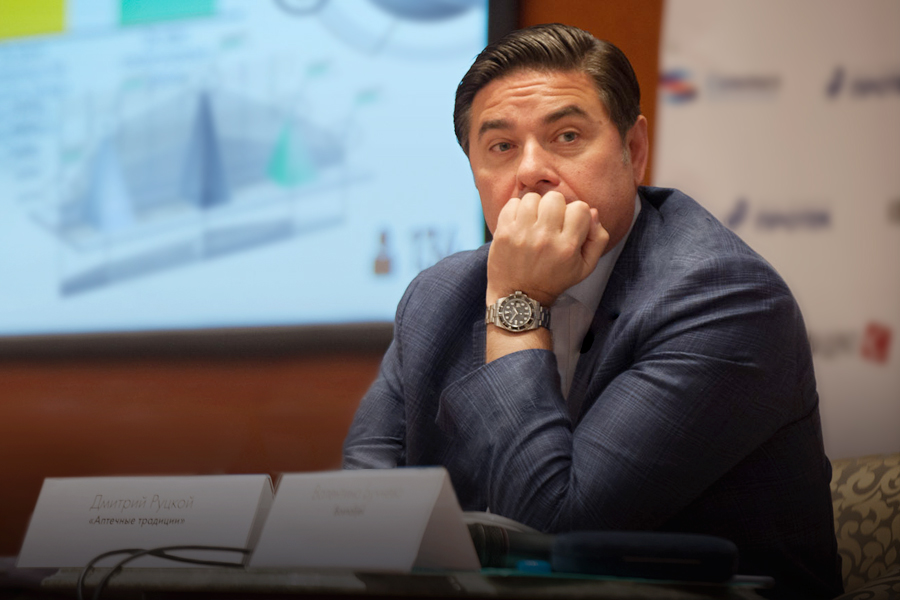It was the Americans who first invented the Heavy-Ion Therapy, a treatment that could save thousands of lives suffering from many types of inoperable cancer. But the U.S. held off on the development of the medtech, and so the torch was passed to Japan. And we should thank Japan, namely, certain enthusiasts who managed to obtain public funding for a technology so exclusive yet so obscure. These people helped build a network of heavy ion therapy clinical research centers and even convinced the authorities that the expensive radial procedures should be covered by health insurance state-run programs. Vademecum retraced the path of anti-cancer technology between the continents and tried to find out why would the Americans drop the project and how the Japanese specialists found their way to tame the ions.
Two giant three-feet-tall dolls are sitting right next to the staircase, guarding the Nakano Takashi’s Department of Radiation Oncology of the Gunma University along with the wine-red emblem of Harvard Alumni. These Daruma dolls, modeled after Bodhidharma, are believed to be the talisman of good luck to the Japanese, while the still Harvard flag would represent the career twist of the radiation oncologist Nakano which eventually led to the development of one whole type of oncology treatment in Japan, namely the heavy ion therapy.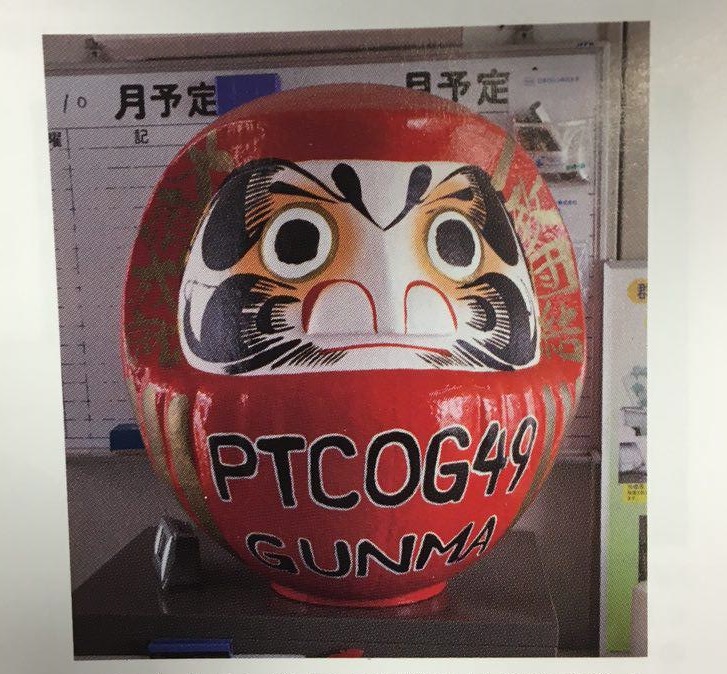
A young Gunma graduate and NIRS member, Nakano went to the U.S. for the experience exchange. Back then, NIRS took a lively interest in what was found by the American scientists – heavy ions and its role in oncology therapy. It was the carbon ions that were used, people called them heavy because their atomic number was higher than that of other particles-beams of a proton or helium ions.
Chapter 1
First experiments with the carbon ions in the U.S. began in 1970s with the establishment of the first linear heavy ion accelerator in The University of California, Berkeley. This method, the C-RT (or carbon-ion radiotherapy), it hasn't changed that much ever since: accelerated heavy ion beams would be pointed to the tumor, fighting it. The deeper the beam goes through, the bigger effect it has on the infected tissue while avoiding the healthy areas, hence making it much more efficient than standard radiotherapy where the radiation level of the beam penetrating the body is proportionally reduced. Even more important is the targeting accuracy when you try to reach the spinal cord, brain stem, colon or any other inaccessible areas.
Interestingly enough, American scientists would not integrate the newly discovered therapy into the everyday medical practice right off the bat as they limited themselves to researches at major hospitals.
Herman Suit, the professor of the Radiation Oncology of Harvard Medical School and a specialized professional at Massachusetts General Hospital, was one of the leaders of the time to contribute to the development of particle beam (not carbons but protons) therapy method, so Nakano went to him. Back then Takashi studied the efficiency of using the therapy for the cervix carcinoma, so it turned out to be a great opportunity to dive into inventions of the overseas colleagues.
With the help of $172m of government subsidies brought to the project, the NIRS put its own heavy ion accelerator into service in 1994, eventually evolving into the Research Center for Charged Particle Therapy. The Research Staff would later realize the method worked for a wide range of diseases – lung cancer, prostate carcinoma, head and neck cancer, rectal cancer, bone and soft tissue cancer.
«The results were astonishing, especially for certain types of cancer, e.g. melanoma, a disease with strong radiation resistance, would just disappear! Or even osteoblastic sarcoma? A surgical treatment is the only choice but how can you operate on pelvic bones? With C-RT we managed to deal with it. It was a breakthrough», – Nakano recalls.
In 2000, Nakano organized the Department of Radiation Oncology at Gunma University and became the Head of it. «Back then I was a very, very young professor [47 years at the time – Vademecum], I insisted that heavy ion therapy to be organized in Gunma University. But this was too expensive and obscure at the same time, so any other professor would deny the whole idea».
Nakano had an idea of building the first university-based ion therapy center. Two pathfinders – one in NIRS and one in Hyōgo – were established as the specialized objects.
Chapter 2
In 2003, the Japanese government approved the heavy ion therapy as medtech. Nakano Takashi together with his colleagues specified the population of Gunma and four adjacent prefectures which cumulatively amounted to 15.8m people, out of which at least 1500 people were patients who might have had benefit from the therapy.
The higher cost of an incredibly effective treatment ($28k-38k) would help quickly return the investment. NIRS even ran an experiment: Patients received only radical surgery for primary rectal adenocarcinoma and had isolated unresectable pelvic recurrence. Fourteen and 11 patients receiving treatment for local recurrence between 2003 and 2005 were followed retrospectively at NIRS and Gunma University Hospital, respectively. Treatment was carried out with C-ion RT alone at NIRS, while multimodality therapy including three-dimensional conformal radiotherapy, chemotherapy, and hyperthermia was performed at Gunma University Hospital. The 2-year overall survival rate was 85% and 55% for C-ion RT and multimodality treatment, respectively. The mean cost was 4,803,946 JPY for the C-ion RT group and 4,611,100 JPY for the multimodality treatment group. The incremental cost-effectiveness ratio for C-ion RT was 6,428 JPY per 1% increase in survival. The median duration of total hospitalization was 37 days for C-ion RT and 66 days for the multimodality treatment group.
Mitsubishi Electronic developed a more compact accelerator complex for the NIRS Heavy Ion Therapy Center; the complex was three times smaller than the first machinery in NIRS and cost the center only $80m, so that total project cost dropped to $124m. The Ministry of Health of Japan set the seal, and so in the year 2006 the project commenced.
The project caught interest of adjacent prefectures, therefore raising two questions: how could a project costing an arm and a leg become more affordable and did it make any sense in the first place.
The investments still were reportedly deemed high ($124m) against $67m required for the establishment of the Proton Beam Therapy Center, another type of radiation therapy claiming its momentum at the time.
<--slider-->
In those days, the heavy ion therapy was considered a cutting edge medtech, so the medical insurance policy wouldn’t cover it. Back in 2007, the Ministry of Health, Labour and Welfare wouldn't waste any second thinking on including C-RT as a part of medical insurance policy. “It should prove its effciciency” – source close to the Ministry said to Nikkei Medical Online back then. «For the C-RT to be covered by medical insurance, we need to spread the technology countrywide”, – Nakano thought. And time told it came true.
The Gunma University Heavy-Ion Medial Center (GHMC) opened its doors in 2010 at the same time when the 49th PTCOG was held in Gunma. The 6,300 sq.m. center with therapeutical and exam rooms, positron emission tomography, CT imaging, MRI and, most importantly, the accelerator complex of 20 m in diameter.
Soon, the center would serve a record-breaking number of 500 patients annually, along with the medical tourists. For example, the treatment period for lung cancer lasted a week, and the very heavy ion therapy session would take only half an hour, whereas traditional beam therapy would require 6-to-8 weeks.
Chapter 3
Shortly after, centers were established in Saga and Kanagawa prefecture, two more upcoming in Osaka and Yamagata. The only question is money which people might not have for the treatment.
«Even for Japan, where the C-RT density is the world’s highest, we use the method for 0.2% of newly discovered cancers only. The affordability of the treatment is still questionable. <…> The decades shall pass, after which we will be able afford it», - Gunma staff stated in 2016 in an article. C-RT was only for the very rich, Nakano says. With monthly wage of $3.3k you cannot count on $28k treatment.
The three-story Osaka Center will open its doors for the first patients in October 2018. A 8,900 sq. m. Clinic will be able to serve up to 1,800 people a year. A huge statement it is – with existing centers serving no more than 500 patients a year it makes a maximum of 2,500 patients for the whole country. The administration of the Osaka Clinic said it would find the ways of the financial assisitance, taking into account the existing experience. For example, in Gunma the prefecture provides patients with a seven-year-term loan of the whole sum (but no more than $28k) with a 6% interest rate. Surprisingly, this has not affected the influx much.
The construction project of the University of the Yamagata Prefecture will cost around $143m, with estimated technical maintenance of at least $6.1m yearly. It means the University will have to serve 160-200 patients each year only to make it to the breakeven point. «The problem with the University of the Yamagata prefecture is that there are not that many patients around it. And this comes as quite a surprise since there are a lot of cases of cancer, and people could benefit from heavy ion therapy there», - Masahiro Uehara, the president of the Medical Department Research Institute wrote in op-ed for Business Journal.
In 2016, medical insurance began covering the part of C-RT cost for osteoblastic sarcoma, and starting from mid-2010 – it will cover part of the expenses for head and neck cancer as well as prostate cancer. The Ministry of Health assures people they will have to pay only $950 for the whole treatment course, and the government will cover all the rest, but still they keep quit on the tariffs. «The cost of each case will be reduced, that's why we would need much more patients to be served to be able to provide for our work», – Nakano says.
Chapter 4
There are two more problems C-RT in Japan is facing. Many oncosurgeons still deny the new medtech. «The truth is that many surgeons know of the C-RT and how effective it is. It is only the money that keeps them denying when considering a treatment for liver cancer. «I will receive C-RT if I suffered with liver cancer», - some of the leading surgeons say. Nakano says, We’re trying our best to convince our colleagues that the C-RT is the only choice for certain types of cancer.
The National Institute will see its end some day due to expansion of minimally invasive procedures and C-RT. This is the main reason why the Institute is against the C-RT. It’s not about the patients at all, - Masahiro Uehara, the president of the Medical Department Research Institute, said to the Japanese Huffington Post in August 2017.
The second problem is manpower shortage. According to Nakano, the students are not that interested in the C-RT since there are not that many places to study it. «The biggest Department of Radiation Oncology is here, in Gunma. Our graduates work everywhere acrocss the country, but many of them are not involved into the C-RT, it’s just not enough facilities for them!».
The average center requires 5 radiation oncologists, six medical physicists, three nurses along with other non-operational personnel – a total of 30 employees. And they all need to study somewhere. In 2012, the Gunma University introduced a special educational program.
Each year the Japanese government grants $2.3m for the program. It's a hot button topic – more than 11 centers are planned to be built in the world besides Japan: China, Malaysia, UAE, France, Italy, Austria, Germany, the USA – the list goes on.
Since 1994, Japan has performed C-RT treatment for more than 15,000 patients. The therapy is the best for Stage II-Ⅲ prostate cancer – 97%-100% of three-year survival rate with 90-97% of five-year survival rate. Five-year survival rate for melanoma is 51%, head and neck cancer – 57%, bone and soft tissue cancer – 58%. According to Nakano Takashi, the high level objective of CR-T is to lengthen life of people and improve its quality. And the demand for it is increasing (Average life duration for Japan is 85 years). «The population gets olders, so cancer related diseases will go up. And if you die from cardiovascular diseases, we’ll die from cancer. We need to do something about that», – Nakano states.
日本語で
2フィートの巨大な3フィートの人形が、階段のすぐ隣に座って、中野隆史の群馬大学放射線腫瘍学科とハーバード卒業生のワインレッドの紋章を守っている。 BodhidharmaをモデルにしたこれらのDaruma人形は日本人にとって幸運の魔物であると信じられていますが、Harvardの旗は放射線腫瘍学者の中野さんのキャリアのひねりを表しており、最終的には、日本、すなわち重イオン療法。
群馬の若い卒業生とNIRSのメンバーである中野は、経験交換のために米国に行った。当時、NIRSは、重イオンとがん治療における役割について、米国の科学者が見いだしたものに活発な関心を示しました。使用されたのは炭素イオンで、人々は原子番号がプロトンやヘリウムイオンの他の粒子ビームのそれよりも高かったため重いと呼ばれていました。
第1章。
米国での炭素イオンの最初の実験は、カリフォルニア大学バークレー校の最初の線形重イオン加速器の設立から1970年代に始まりました。
この方法、C-RT(または炭素イオン放射線療法)はそれ以来それほど変わっていません。加速された重イオンビームは腫瘍に向けられ、それと戦います。ビームの深さが深くなればなるほど、感染した組織に及ぼす影響が大きくなり、健康な領域を避けることができるため、体内を貫通するビームの放射レベルが比例して減少する標準的な放射線療法よりもはるかに効率的です。さらに重要なことは、脊髄、脳幹、結腸または他のアクセスできない領域に到達しようとするときの標的の正確さです。
興味深いことに、アメリカの科学者は、新たに発見された治療法を、大病院での研究に限定してバットのすぐ後ろにある毎日の医療行為に組み込むことはできません。
ハーバード大学医学部の放射線腫瘍学教授でマサチューセッツ総合病院の専門医であるHerman Suit教授は、この方法の開発に貢献する時代のリーダーの1人であり、中野は彼に向かった。当時、Takashiは子宮頸部癌の治療法の有効性を研究していたので、海外の同僚の発明に潜入する絶好の機会となりました。
プロジェクトにもたらされた政府の補助金172百万ドルの助けを借りて、NIRSは1994年に重イオン加速器を稼働させ、最終的には荷電粒子治療研究センターに進化しました。研究スタッフは、後に、肺癌、前立腺癌、頭頸部癌、直腸癌、骨および軟部組織癌のような広範囲の疾患に対して有効な方法を実現するだろう。
«結果は驚くべきものでした。放射線耐性の強いメラノーマは消えてしまいます。または骨芽細胞腫でさえ?外科的治療は唯一の選択ですが、どのように骨盤骨を手術できますか? C-RTでは、それに対処することができました。それは画期的なものだった»、中野は回想する。
中野は2000年に放射線腫瘍学科を組織し、その責任者に就任しました。 «当時、私は非常に若い教授であった(当時47歳 - ヴァデナテウム)、私は群馬大学で重イオン療法を主催することを主張しました。しかし、これはあまりにも高価で、同時に不明瞭だったので、他のどの教授も全体の考えを否定するだろう»。
中野氏は最初の大学に拠点を置くイオン治療センターを建設する考えを持っていました。 NIRSに1つ、Hyōgoに1つの2つのパスファインダーが特殊オブジェクトとして確立されました。
第2章
2003年、日本政府は重イオン療法をメディテクとして承認した。中野隆は同僚と一緒に群馬県と隣接する4つの都道府県を指定し、累計で15.8百万人に達し、うち1,500人がこの治療の恩恵を受けた可能性のある患者であった。信じられないほど効果的な治療(28k〜38kドル)のコストが高いことは、迅速に投資を回収するのに役立ちます。 NIRSはさらに実験を行った。患者は、原発性直腸腺癌の根治手術のみを受け、切除不能な骨盤再発を分離した。 NIRSおよび群馬大学病院では、2003年から2005年の間に局所再発の治療を受けた14人および11人の患者を遡及的に追跡調査した。群馬大学病院では、3次元コンフォーマル放射線療法、化学療法、温熱療法を含む多モード療法を実施しながら、NIRSでCイオンRTのみで治療を行った。 2年間の全生存率は、CイオンRTおよび多峰性治療でそれぞれ85%および55%であった。平均費用は、CイオンRT群では4,803,946円、多モード治療群では4,611,100円であった。 CイオンRTの費用対効果比は、生存率が1%増加するにつれて6,428円となりました。全入院期間の中央値は、CイオンRTでは37日、多モード治療群では66日であった。
三菱電機は、NIRS重イオン治療センターのためのよりコンパクトな加速器複合体を開発しました。コンプレックスはNIRSの最初の機械の3倍の大きさで、センターの費用はわずか80mで、総プロジェクト費用は12400万ドルに減少しました。日本国保健省は印鑑を設定したので、2006年にプロジェクトが開始されました。
このプロジェクトは隣接する都道府県の関心を集め、2つの疑問を提起しました。どのようにして腕と脚のコストがかかり、プロジェクトをより手頃なものにすることができましたか?
投資は依然として、その時点でその勢いを主張している別のタイプの放射線療法であるプロトンビーム治療センターの設立に必要な6700万ドルに対して、依然として高いとされている(124百万ドル)。
当時、重いイオン療法は最先端の医学治療と見なされていたため、医療保険はそれをカバーしませんでした。 2007年には、厚生労働省は、C-RTを医療保険の一部として考慮することを第二に考えることを無駄にしないだろう。 "それはその有効性を証明するはずです" - 近くの情報源は日系医療オンラインに言いました。 «C-RTが医療保険の対象となるためには、全国的に技術を普及させる必要がある」 - 中野氏は考えている。時間はそれが実現したと言いました。
群馬大学重粒子イオンセンター(GHMC)は、群馬で第49回PTCOGが開催されたのと同時に、2010年に開かれました。 6,300 sq.m.ポジトロン放出断層撮影法、CTイメージング、MRI、そして最も重要なのは、直径20μmの加速器複合体である。
すぐに、このセンターは医療観光客と一緒に年間500人の記録的な数の患者にサービスを提供するだろう。例えば、肺がんの治療期間は1週間続き、非常に重いイオン療法のセッションは半時間しかかかりませんでしたが、伝統的なビーム療法は6〜8週間かかるでしょう。
第3章
まもなく、佐賀県と神奈川県にセンターが開設され、大阪と山形で2回予定されています。唯一の疑問は、人々が治療のために持たないであろう金額です。
3階建ての大阪センターは、2018年10月に最初の患者のためにオープンします。8,900平方メートル。クリニックは、年間1,800人までの人にサービスを提供することができます。これは巨大な声明です。既存のセンターで年間500人以上の患者にサービスを提供しているため、全国で最大2,500人の患者がいます。大阪クリニックの管理者は、既存の経験を考慮して、資金調達の方法を見つけると述べた。例えば、群馬県では、患者は、6%の金利で全額(ただし$ 28k以下)の7年間のローンを患者に提供します。意外にも、これは流入に多くの影響を与えていない。
山形県立大学の建設工事には1億3,300万ドルの費用がかかり、1年に最低6百万ドルの技術的メンテナンスが予定されている。つまり、毎年160〜200人の患者にサービスを提供し、損益分岐点にする必要があります。 «山形県立大学の問題点は、山形県周辺に患者があまりないことです。そして、これはかなりの驚きですが、癌の多くの症例があり、人々は重イオン療法の恩恵を受ける可能性があります» - ビジネスジャーナルの編集部に書かれた医療部研究所の上原正弘
2016年に、医療保険は骨芽細胞腫のC-RT費用の一部をカバーし始め、2010年半ばから頭頸部癌と前立腺癌の費用の一部を負担することになりました。保健省は、治療コース全体でわずか950ドルを支払う必要がある人を保証し、政府は残りのすべてをカバーするが、依然として関税を撤廃する。 «それぞれの場合の費用が削減されるため、私たちの仕事を提供するためにはるかに多くの患者が必要になります» - 中野氏は言います。
第4章
日本のC-RTにはさらに2つの問題があります。多くのオンコラジョーはまだ新しい医学を否定している。 «真実は、多くの外科医がC-RTを知っており、それがいかに効果的かということです。肝がんの治療法を検討するときに、彼らを否定するのは、お金だけです。彼らは仕事を失いたくはないとナカノは言います。 - 私たちは、C-RTが特定のタイプのがんの唯一の選択肢であることを同僚に説得するために最善を尽くしています。
ナショナルインスティテュートは、低侵襲手技とC-RTの拡大により、終わりを告げるでしょう。これが研究所がC-RTに反対している主な理由です。患者さん全然ではありません。医科学研究所の上原昌弘医師は、2017年8月、日本のHuffington Postにこう言いました。
第二の問題は人力不足です。中野氏によると、学生はC-RTに興味がありません。なぜなら、それを学ぶ場所があまりないからです。 «放射線腫瘍学の最大の部門は、群馬でここにあります。私たちの卒業生はどこにでもいますが、その多くはC-RTに関与していません。
平均的なセンターには、5人の放射線腫瘍医、6人の医師、3人の看護士、他の非業務担当者、合計30人の従業員が必要です。そして、彼らはどこかで勉強する必要があります。群馬大学は2012年に特別教育プログラムを導入しました。
日本政府は毎年、プログラムに2.3百万ドルを授与しています。これはホットな話題です。日本以外の世界では、中国、マレーシア、アラブ首長国連邦、フランス、イタリア、オーストリア、ドイツ、米国など、11以上のセンターが計画されています。
1994年以来、日本は15,000人以上の患者に対してC-RT治療を行ってきた。この治療法は、ステージII-V前立腺癌 - 3年生存率の97%-100%、5年生存率の90〜97%に最適です。メラノーマの5年生存率は51%、頭頸部癌57%、骨軟部組織癌58%である。 Nakano Takashiによると、CR-Tの高度な目的は、人々の生活を長くし、品質を向上させることです。そして、それに対する需要は増加しています(日本の平均寿命は85年です)。 «人口は年老いているので、がん関連疾患が増えます。また、心血管疾患で死亡した場合は、がんで死ぬでしょう。私たちはそれについて何かする必要があります»、 - Nakano州。
Translated into Japanese by Tomoko Tamura
